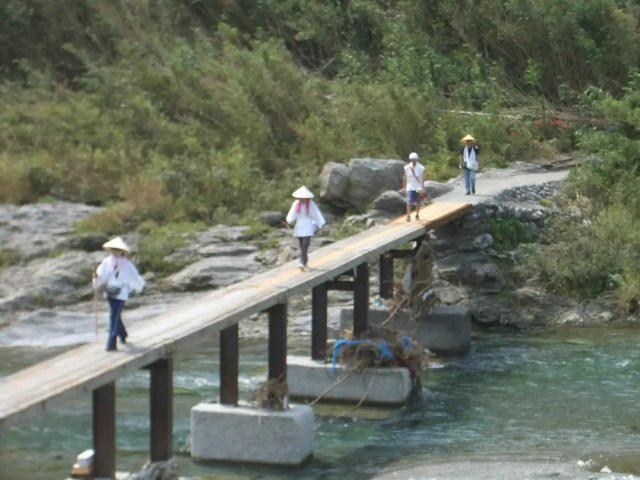
Program helps hikikomori take steps towards reconnecting with the outside world.
Hikikomori is the Japanese term used to refer to shut-ins, individuals who have withdrawn from educational, professional, and social life. Entirely dependent on others, usually family members, to put a roof over their head, clothes on their back, and food in their stomach, hikikomori are often described as a modern social issue, but one organization thinks there may be a way to help them that’s over 1,000 years old.
The Shikoku Pilgrimage, or Shikoku Henro, as it’s called in Japanese, is a circuit around Japan’s island of Shikoku, stopping at temples with connections to Kukai, Japan’s most famous traveling Buddhist monk. There are a total of 88 sites on the Shikoku Pilgrimage, and for roughly 1,200 years since Kukai’s time pilgrims have been tracing his steps around Shikoku.
▼ The Shikoku Pilgrimage route
Those looking for the most authentic experience do the pilgrimage on foot, which takes several weeks to complete. That’s not something that most people can fit into their work or school schedules nowadays, but that’s not an issue for hikikomori, which is why New Start, a Chiba Prefecture-based organization for helping hikikomori reach greater independence, is organizing a Shikoku Hikikomori Pilgrimage.
▼ “A journey to find how you want to live your life – Hikikomori Pilgrimage”
In speaking with shut-ins, New Start noticed that a number of them said that they’d like to go outside their homes and make connections with other people but didn’t feel like they had any reason or opportunities to do so. The cruel irony, though, is that the more time one spends as a hikikomori, the less likely they are to feel like there’s anything for them in the outside world. So New Life began thinking about ways to present hikikomori with a change of scenery and daily environment, which is when they thought to begin organizing hikikomori pilgrimages.
Over 120 hikikomori have taken part in the pilgrimages so far, traveling in groups of three to eight people, plus New Start staff accompanying each group. The goal is to improve participants’ physical health and mental well-being, with the long walks through Shikoku’s beautiful natural environment giving them a sense of concrete purpose and solidarity with their fellow hikikomori pilgrims. Donations and financial support from government and local organizations help to keep costs low, with food and lodging expenses combined working out to roughly 3,000 yen (US$20) a day.
80 percent of participants have reported that the Hikikomori Pilgrimage helped them then make positive changes toward improving their lives, and the program has received commendations from the Japanese government’s Cabinet Office. In many ways, a long group walking pilgrimage feels like a good way to ease back into social interaction and a daily exposure to the world outside one’s room. Though the route is approximately 1,200 kilometers (745 miles) long, the Hikikomori Pilgrimage takes two months to complete it, making it a physical accomplishment but one that doesn’t require an exhausting breakneck-pace forced march to complete. Social interactions are likely at a comfy medium level too, since that walking probably allows for light chitchat, but not necessarily enough for any intense, mentally draining discussion.
For those unable to make the entire two-month pilgrimage, it’s also possible to participate in a 10-day section, dropping in with the other hikikomori pilgrims and heading home early. New Start also maintains a Discord chat for participants so that they can keep in touch and continue offering encouragement to one another after the pilgrimage is over.
The Hikikomori Pilgrimage is open to participants between the ages of 18 and 45, with the next session scheduled for September 28 to November 29. Applications can be made through the New Start website here, and hopefully the walk around Shikoku will be the figurative first step towards a happier future for its pilgrims.
Source, images: PR Times
● Want to hear about SoraNews24’s latest articles as soon as they’re published? Follow us on Facebook and Twitter!